Shoulder press is actually one of the best exercises aiming at strengthening shoulders, enhancing better posture and when it comes to augmenting overall power in the upper body. It mainly targets the deltoids, triceps, as well as the upper chest, which makes you build bigger and stronger shoulders. It enhances strength, balance, and improvement of muscle coordination, whether it is done with dumbbells, a barbell or a machine. Correct shoulder press exercises can give you stronger shoulders, do more exercises better and make your top half athletic.
- What is the Shoulder Press?
- Muscles Engaged in the Shoulder Press
- The Right Way to Perform the Shoulder Press
- Variations of the Shoulder Press
- Advantages of the Shoulder Press
- Mistakes in Shoulder Press
- Shoulder Press vs Alternatives
- Strength Standards and Comparisons
- Lack of Disadvantages and Safety Concerns
- How to Grow Big Shoulders
- Conclusion
- Frequently Asked Questions
What is the Shoulder Press?
Shoulder press is also termed as the overhead press or military press, is a type of compound (Upper body) exercise which makes use of pressing weight in an upright position up overhead. It may also be done in different positions, such as standing or in the seated position, using dumbbells, barbells or a shoulder press machine.
The shoulder press aims at strength building in the shoulders and arms, with the supportive muscles such as core, upper chest and back muscles being involved to stabilise it. This is an exercise that is done by many athletes and bodybuilders due to the fact that it enhances their strength in performing the pushing movements, improves their appearance, and the exercise supports other lifts like the bench press and incline press.
It is not merely a workout in a gym, but it is an exercise of pure force and domination. There is no point in starting with heavy pressing more than 20 kg; shoulders are a good start, and the advanced lifters can target 30 kg or more per arm. Lifting heavier weights, like 70 kg military press, is an enormous strength in competitions or when faced with professional requirements.

Muscles Engaged in the Shoulder Press
Multiple muscles are the targets of the shoulder press that can make an individual stronger and more appealing:
- Deltoids (Shoulders): The chief muscles are the anterior, lateral and posterior deltoids. Their duties involve lifting and stabilising the arms when lifting them.
- Triceps: These are the muscles situated in the back of the arms and help in stretching the elbows at the top of the movement.
- Trapezius: This assists in stabilising the shoulder blades during the pressing of the weight overhead.
- Upper Chest (Clavicular Head): Acts like a secondary mover, particularly in a seated form or incline form.
- Core and Stabilisers: A shoulder press, particularly when standing up, involves the use of the core, lower back and glutes to offer balance and avoid over-arching.
This muscle engagement mixture contributes to the shoulder press being one of the best shoulder exercises that one can do in life.
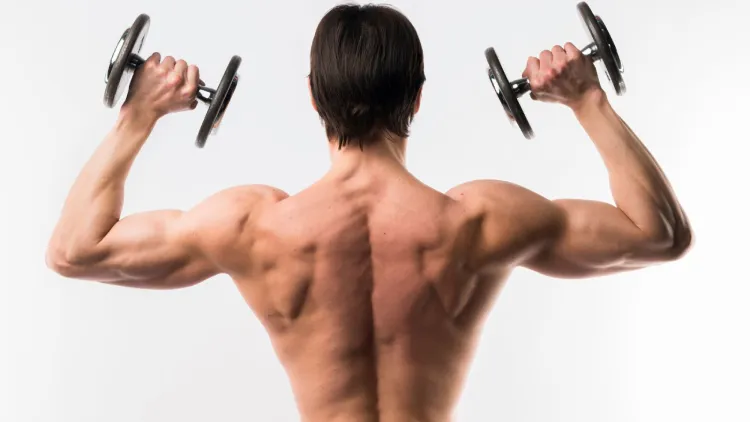
The Right Way to Perform the Shoulder Press
The proper form of the shoulder press is guaranteed to make the exercise as productive as possible in order to diminish the chances of getting an injury.
Here’s how to do it step by step:
Starting Position:
- Lunge with feet in a shoulder position.
- Grasping hold of dumbbells or a barbell raised at the shoulders and palms forward.
- Turn on your belly button and straighten your chest.
The Press:
- Breathe out, pressing the weight straight up until your arms are extended to maximum length.
- Do not arch your back or use momentum.
- Hold your wrists in a straight posture and just over the elbows.
Lowering the Weight:
- As you lower the weight at a steady but gradual movement to the shoulder position, breathe in.
- Take a break before the next repetition.
Repetitions:
- In order to target the growth of muscles, target 8-12 reps per set. To be strong, heavier weights should be used with 4-6 reps.
You are lifting 20 kg dumbbells or 40 kg dumbbells: in any case, it is always important to pay attention to the control of movement and not to the speed. The 3-3-3 workout strategy (3 snatches up, 3 snatches hold, 3 snatches down) can also enhance muscle engagement.

Variations of the Shoulder Press
Different types of shoulder press exist, which have particular advantages and patterns of muscles.
Dumbbell Shoulder Press:
Enhances balance and strength deficit in both arms. It is a great one that should start with lighter weights, such as 1020 kg per arm.
Barbell Shoulder Press:
Complaints of general strength and power. This is a difference which enables you to take heavier loads, which enhances the upper body mass.
Seated Shoulder Press:
Gives enhanced isolation of the deltoids because you are not relying heavily upon the use of your legs or core to stabilise yourself.
Arnold Press:
It is the variant that includes rotating your wrists in the course of the motion that uses all three heads of the deltoid muscles to achieve full development of your shoulders.
Machine Shoulder Press:
Easier to use because a beginner finds it easier to find a balance in its motion track, and mistakes made by the form do not occur.
Both versions have their merits, but in the way of overall development and power, the standing barbell shoulder press is the most effective.
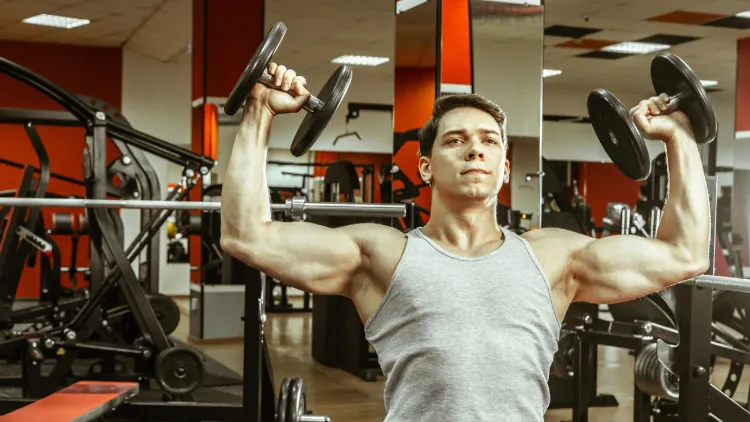
Advantages of the Shoulder Press
Shoulder press is not only an exercise that builds muscles but also improves the performance of the whole body.
Here are its major benefits:
- Improve Shoulder Size and Strength: Trains you to make well-shaped, strong shoulders, which enhance your body and symmetry.
- Improves Posture: Tones muscles that can stabilise your shoulders and upper back, which fight slouching due to day-to-day activities.
- Boosts Functional Strength: The Moving pattern resembles the pushing movement of real life, so it seems to be a useful sports and routine exercise.
- Enhances Core Stability: Shoulder press in standing position involves the abdomen and lower back, which promotes stability as well as posture.
- Supports Other Lifts: Shoulder strength helps in the improvement of such exercises as the bench press, raising, the side-lateral raises, and the incline chest press.
- Aids in Fat Loss: Complex movements such as the shoulder press use more calories, which helps in losing weight and also defines the muscles. Although this does not directly work on slimming arms, it does aid in their tightening.
Mistakes in Shoulder Press
More experienced lifters often commit flaws that hinder development or even cause harm. Avoid these common mistakes:
- Arching the Back: Bending lays undue strain on the spine. Hold your stomach in to the side as it is a neutral position.
- Using Excessive Weight: When a person is a beginner, a 20 kg shoulder press will be perfect since any excess weight may end up straining the shoulders. Progress gradually.
- Poor Elbow Positioning: Elbow flaring may cause stress to the joints. Have them at the slightest in front of your shoulders.
- Lack of Full Range of Motion: The half-lowering of the bar decreases efficacy. Bend it down to the level of the shoulders every time.
- Neglecting Warm-Up: Cold muscles are also likely to be injured. Do dynamic stretches or light warm-up exercises.
Shoulder Press vs Alternatives
The question that a lot of people ask themselves is whether the shoulder press is superior to such exercises as the lateral raise or overhead press.
The fact is, they both have a purpose:
- Lateral Raises: Target the width of the side delts.
- Shoulder Press: Strength and general mass.
- Overhead Press: This is similar to the shoulder press except that the military press is the standing and stricter version.
Thus, both shoulder press and lateral raises need to be included in the workout to have a full-fledged shoulder development.
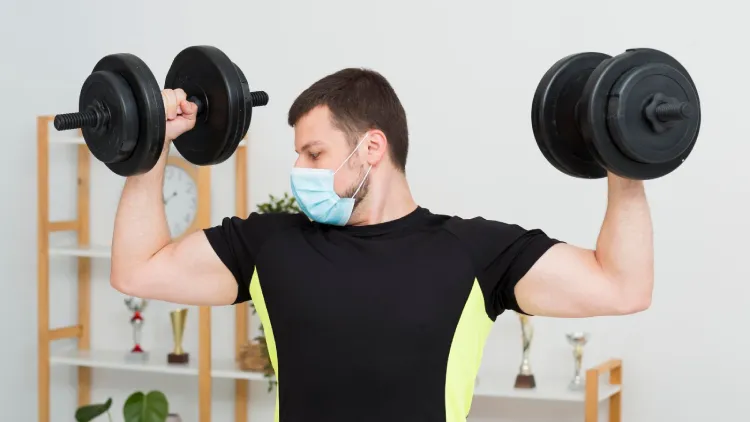
Strength Standards and Comparisons
To gauge your progress:
- A shoulder press weighing 20 kg is suitable for beginners.
- The intermediate strengths are seen in a 30 kg overhead press.
- Most men can do a 70kg military press, which is an advanced level.
- Bench pressing 140 kg (and above) is very uncommon – it is only one in ten lifters who can press 225 lbs (102 kg).
- The average untrained male can approximate 30-40 per cent of his own body.
To provide context, Usain Bolt, who was 9.58 seconds in the 100m dash, is said to have had an explosive power but is said to have benched approximately 100 kg to his power peak.
Generally, as a man weighing 75 kg, the desired strong bench press should be 75-100 kg, deadlift 120-150 kg, and shoulder press 40-60 kg are realistic and strong objectives.
Lack of Disadvantages and Safety Concerns
Now, as much as the shoulder press has a lot to recommend it, there are some drawbacks:
- It may compress the shoulder joints in case of misdoing.
- Strain in the rotator cuff may be due to the use of bad form or heavy weight.
- The novices are even unable to hold heavy dumbbells at head level.
- Also, be controlled in form and add weight steadily. It should not entail much jerking, and warming up should be done.
How to Grow Big Shoulders
To enlarge, well-defined shoulders involve several exercises serving all the heads of the deltoids:
- Shoulder Press (mass and strength)
- Lateral Raise (size and form)
- Front Raises (front delts)
- Rear Delt Flyes (izard rear delts)
Do 3-4 series of each exercise and make sure you do progressive overload, i.e. adding more weight or more reps each week. When this is supplemented with proper nutrition and rest, the shoulders will obviously improve.
Conclusion
Shoulder press is one of the exercise forms that are best used in building the upper body, enhancing posture and building balanced shoulders. It uses more than one muscle at a given moment and helps a person to advance in other key lifts. It does not matter whether you are pressing 20 kg as a beginner or 70 kg and an advanced athlete; perfect control over a shoulder press will guarantee the presence of strength, stability, and sculpted shoulders. Make it part of your regimen, and you will be gaining your usual performance rewards in less than a week.
Frequently Asked Questions
1. How many pounds should one have on the shoulder press?
Beginners should have 10-20 kg of weight per arm. The intermediate lifters can target 25-30 kg, whereas the advanced lifters can target 40kg and above.
2. Are you able to build shoulders without overhead press?
No, but it will be less speedy. Isolation exercises are effective, but the best exercises include the power of compound such as the shoulder press.
3. How come the overhead press was prohibited in competition?
It was eliminated in Olympic weightlifting in 1972 because of the inconsistent judging–nearing the limits between pressing and pushing, they introduced back arching techniques.
4. Which is the best exercise for general strength?
The deadlift is viewed by many people as the best exercise, but the shoulder press is high in terms of power in the upper body.

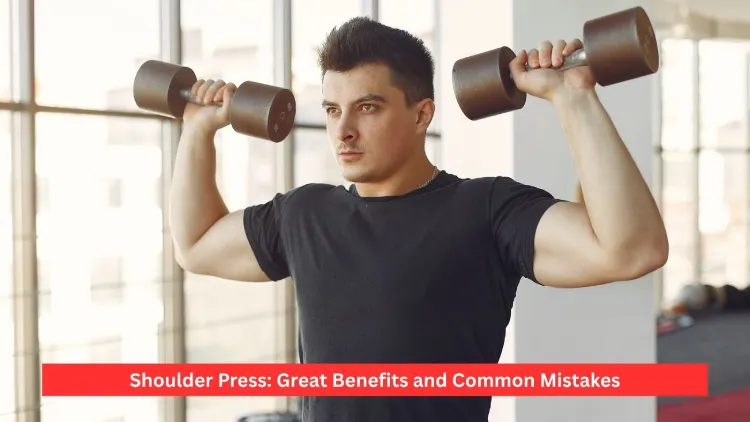


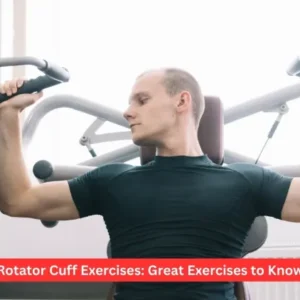



4 thoughts on “Shoulder Press: Great Benefits and Common Mistakes”
I would like to thank you for the efforts you’ve put in writing this web site. I’m hoping the same high-grade website post from you in the upcoming as well. In fact your creative writing abilities has inspired me to get my own website now. Actually the blogging is spreading its wings quickly. Your write up is a good example of it.
Thank you so much! I’m thrilled to hear that my work has inspired you. Wishing you all the best on your blogging journey—keep spreading your wings!
I’m impressed, I must say. Actually hardly ever do I encounter a blog that’s each educative and entertaining, and let me tell you, you’ve gotten hit the nail on the head. Your concept is outstanding; the difficulty is something that not enough persons are speaking intelligently about. I am very happy that I stumbled throughout this in my seek for one thing relating to this.
Thank you so much for the kind words! I really appreciate your feedback and I’m glad you found the content helpful.